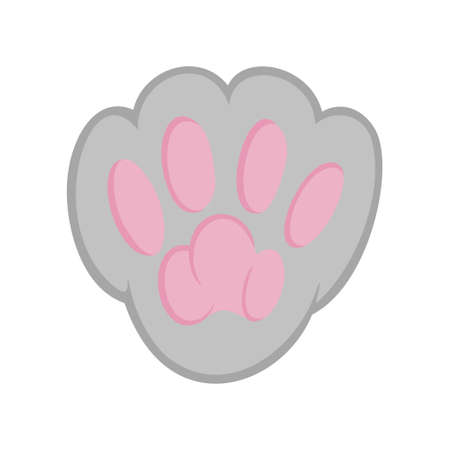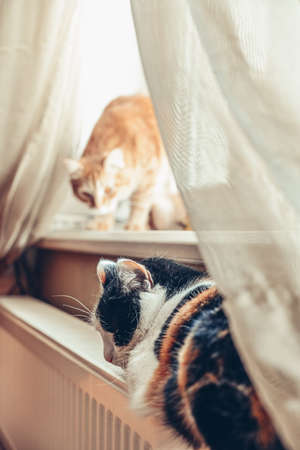1. Importance of Proper Hygiene for Small Pets
Keeping your small pet’s living space clean is essential for their overall health and happiness. Just like humans, pets need a hygienic environment to thrive. A dirty cage or bedding can lead to serious health issues, including respiratory problems, skin infections, and even behavioral changes due to discomfort.
Why Cleanliness Matters
Small pets like hamsters, guinea pigs, rabbits, and ferrets spend most of their time in their enclosures. If their environment isn’t properly maintained, harmful bacteria, mold, and waste buildup can create an unhealthy space. Regular cleaning helps prevent diseases and ensures your pet remains comfortable and stress-free.
Common Health Risks from Poor Hygiene
| Health Issue | Causes | Symptoms |
|---|---|---|
| Respiratory Infections | Ammonia buildup from urine, dust from dirty bedding | Sneezing, difficulty breathing, nasal discharge |
| Skin Irritations & Infections | Bacteria and fungi in soiled bedding | Itching, hair loss, red or inflamed skin |
| Digestive Problems | Moldy food or contaminated water | Diarrhea, loss of appetite, lethargy |
| Unpleasant Odors | Waste accumulation and poor ventilation | Strong ammonia smell, musty odor in enclosure |
The Connection Between Cleanliness and Behavior
A dirty habitat doesn’t just affect your pet’s physical health—it can also impact their behavior. Pets living in unsanitary conditions may become stressed, anxious, or even aggressive. On the other hand, a clean environment encourages natural behaviors like burrowing, playing, and exploring.
Signs Your Pet’s Cage Needs Cleaning
- Strong odors coming from the enclosure
- Bedding appears damp or soiled
- Pest infestations (flies or mites)
- Your pet avoids certain areas of the cage
- Increased sneezing or scratching behavior
How Often Should You Clean?
The frequency of cleaning depends on the type of pet you have and the size of their enclosure. Here’s a general guideline:
| Pet Type | Spot Cleaning (Daily) | Full Cleaning (Weekly) |
|---|---|---|
| Hamsters & Mice | Remove soiled bedding & leftover food | Replace bedding & wipe down surfaces |
| Guinea Pigs & Rabbits | Scoop out waste & refresh hay/water | Deep clean cage & replace all bedding materials |
| Ferrets & Hedgehogs | Scoop litter box & remove waste daily | Sanitize enclosure & wash accessories thoroughly |
A well-maintained habitat not only keeps your pet healthy but also makes caring for them easier in the long run. By staying consistent with cleaning routines, you’re ensuring a safe and comfortable home for your furry friend.
2. Choosing the Right Cage and Bedding Materials
Selecting the right cage and bedding is essential for maintaining a clean and healthy living space for your small pet. The right materials can help control odors, prevent bacterial growth, and ensure your pets comfort.
Choosing the Best Cage
A well-ventilated, appropriately sized cage is key to your pet’s health. Consider the following factors when selecting a cage:
| Factor | Recommendation |
|---|---|
| Size | The cage should be spacious enough for movement, play, and designated areas for food, sleep, and waste. |
| Ventilation | A wire or mesh top allows for proper airflow, preventing moisture buildup and odors. |
| Ease of Cleaning | Cages with removable trays or easy-access doors make routine cleaning simpler. |
| Material | Avoid wood cages as they absorb moisture and odors; opt for plastic or metal frames instead. |
Selecting Safe and Hygienic Bedding
Bedding plays a crucial role in maintaining cleanliness and comfort. Choose bedding that is absorbent, odor-controlling, and safe for your pet’s respiratory system.
Recommended Bedding Types
- Paper-Based Bedding: Soft, dust-free, and highly absorbent, making it great for odor control.
- Aspen Shavings: A natural option that doesnt contain harmful oils like pine or cedar.
- Pelleted Bedding: Compressed pellets made from recycled paper or wood that offer excellent absorption.
Bedding to Avoid
- Cedar & Pine Shavings: These contain aromatic oils that may cause respiratory issues in small pets.
- Sawdust: Too fine and dusty, which can lead to respiratory irritation.
- Scented Bedding: Added fragrances can be overwhelming and harmful to pets.
Bedding Replacement Frequency
The frequency of bedding changes depends on your pet type and how quickly waste accumulates. Below is a general guideline:
| Pet Type | Bedding Change Frequency |
|---|---|
| Hamsters & Gerbils | Spot clean daily; full change every 5-7 days. |
| Guinea Pigs & Rabbits | Spot clean daily; full change every 3-5 days. |
| Mice & Rats | Spot clean daily; full change every 4-6 days. |
Selecting the right cage and bedding not only improves hygiene but also enhances your small pet’s overall well-being. With proper choices, you can create a cleaner, healthier environment while minimizing unpleasant odors and potential health risks.

3. Daily and Weekly Cleaning Routines
Keeping your small pet’s living space clean is essential for their health and comfort. Establishing a proper cleaning schedule helps prevent odors, bacteria buildup, and potential health risks. By following daily and weekly routines, you can ensure a safe and hygienic environment for your pet.
Daily Cleaning Tasks
Performing simple daily maintenance keeps your pet’s habitat fresh and reduces the need for deep cleaning too often. Here are some key tasks to do every day:
- Remove waste: Scoop out any soiled bedding, leftover food, or droppings to prevent odor buildup.
- Refill water and food bowls: Wash and refill bowls with fresh water and food to maintain cleanliness.
- Wipe down surfaces: Use a pet-safe disinfectant or warm water with mild soap to clean cage bars, platforms, and other high-contact areas.
- Check bedding condition: If bedding is damp or heavily soiled, replace it immediately to keep the habitat dry.
Weekly Deep Cleaning Routine
A thorough cleaning once a week ensures that harmful bacteria don’t accumulate in your pet’s cage. Follow these steps:
- Remove your pet: Place your pet in a secure temporary enclosure while you clean.
- Discard old bedding: Remove all bedding and dispose of it properly.
- Wash cage components: Clean the cage base, accessories, and toys with warm water and a mild pet-safe cleaner.
- Disinfect if needed: Use a diluted vinegar solution or a recommended pet-safe disinfectant to eliminate bacteria.
- Dried thoroughly before reassembly: Ensure everything is completely dry before adding fresh bedding and returning your pet.
Recommended Cleaning Schedule
A structured cleaning routine makes it easier to maintain hygiene without forgetting essential tasks. Here’s a suggested schedule:
| Task | Frequency |
|---|---|
| Scoop waste and remove leftover food | Daily |
| Refresh water and clean bowls | Daily |
| Spot-clean cage surfaces | Daily |
| Replace soiled bedding | As needed (daily or every few days) |
| Deep clean entire cage | Weekly |
| Sanitize toys and accessories | Weekly |
| Total cage disinfection (if necessary) | Monthly |
Tips for Maintaining Cleanliness Between Deep Cleans
- Avoid overfeeding: Leftover food can attract pests and create an unsanitary environment.
- Select absorbent bedding: Using high-quality, absorbent bedding helps reduce moisture buildup and odor.
- Add odor control materials: Baking soda (in small amounts) or pet-safe deodorizing products can help keep the area smelling fresh.
- Create a routine reminder: Set reminders on your phone or mark a calendar to stay consistent with cleaning tasks.
A well-maintained cage not only keeps your pet healthy but also creates a more pleasant home environment for you. Sticking to regular daily and weekly cleaning routines will ensure that your small pet stays happy in a fresh, hygienic space!
4. Safe Cleaning Products and Practices
Keeping your small pet’s living space clean is essential for their health and well-being. However, it’s just as important to use cleaning products that are safe and non-toxic to your furry friend. Many commercial cleaners contain harsh chemicals that can be harmful if inhaled or ingested by small animals. Instead, opt for pet-friendly cleaning solutions and follow best practices to ensure a sanitary environment without putting your pet at risk.
Pet-Safe Cleaning Solutions
When selecting cleaning products, avoid anything with strong artificial fragrances, ammonia, bleach, or other harsh chemicals. Here are some safe alternatives:
| Cleaning Solution | How to Use | Why It’s Safe |
|---|---|---|
| White Vinegar & Water (1:1 ratio) | Use as a natural disinfectant for cages, bedding trays, and accessories. | Kills bacteria without toxic fumes; safe if rinsed properly. |
| Baking Soda Paste (Baking Soda + Water) | Scrub stubborn stains and odors from cage surfaces. | Abrasive but non-toxic; helps neutralize odors. |
| Mild Unscented Dish Soap & Warm Water | Wash food bowls, water bottles, and plastic toys. | Easily rinsed off; removes grease and grime safely. |
| PET-SAFE Commercial Cleaners | Select products specifically labeled as non-toxic for small pets. | No harmful chemicals; designed for animal environments. |
Best Practices for Cleaning Your Pet’s Habitat
Avoid Harmful Chemicals
Chemical residues can linger on cage surfaces and bedding materials, posing a risk to your pet. Always check labels and avoid ingredients such as phenols, chlorine, or alcohol-based disinfectants.
Adequate Rinsing and Drying
No matter what cleaning solution you use, always rinse thoroughly with water to remove any residue. Allow all items to dry completely before placing them back in the habitat to prevent moisture buildup and mold growth.
Cage Spot-Cleaning vs. Deep Cleaning
- Daily Spot-Cleaning: Remove soiled bedding, uneaten food, and waste to maintain freshness.
- Weekly Deep Cleaning: Disassemble the cage, wash all components with a safe cleaner, rinse well, and dry before reassembling.
Toy and Accessory Maintenance
Toys and accessories can accumulate bacteria over time. Wash hard plastic or metal toys weekly with mild soap and warm water. For wooden toys or chewables, ensure they are dry after cleaning to prevent mold growth.
The Importance of Ventilation During Cleaning
If using any cleaning solution—natural or commercial—it’s important to ensure proper airflow. Keep windows open or clean in a well-ventilated area so fumes don’t linger in your pet’s living space.
A clean habitat is key to keeping your small pet happy and healthy. By choosing safe cleaning solutions and following proper hygiene practices, you can provide a comfortable environment without exposing your pet to harmful substances.
5. Recognizing Signs of Unsanitary Conditions
Maintaining a clean environment for your small pet is essential for their health and well-being. However, it’s not always easy to tell when their cage or bedding needs immediate attention. Recognizing signs of unsanitary conditions can help prevent health issues and ensure your pet stays happy and comfortable.
Common Indicators of Poor Hygiene
If you notice any of the following signs, it’s time to clean and sanitize your pet’s living space:
| Indicator | Description |
|---|---|
| Strong Odors | A persistent bad smell, especially ammonia-like odors from urine buildup, indicates that cleaning is overdue. |
| Visible Waste Accumulation | An excess amount of droppings or uneaten food in the cage suggests poor maintenance. |
| Damp or Moldy Bedding | If bedding feels damp or shows signs of mold, it needs to be replaced immediately to prevent respiratory issues. |
| Pest Presence | The appearance of flies, mites, or other pests indicates an unclean environment that could lead to infestations. |
| Your Pet Avoids Certain Areas | If your pet avoids specific parts of their cage, it may be due to discomfort caused by dirty or wet bedding. |
| Your Pet’s Fur or Feet Are Dirty | If your pet’s fur looks greasy or their feet are constantly dirty, they might be walking on soiled surfaces too often. |
| Your Pet Shows Signs of Illness | Coughing, sneezing, skin irritations, or unusual behavior could indicate exposure to an unclean environment. |
The Importance of Regular Inspections
A quick daily check can help identify early signs of unsanitary conditions. Inspect the bedding for moisture, sniff for any unusual smells, and observe your pets behavior. By staying proactive, you can prevent hygiene-related health problems before they start.
How Often Should You Clean?
The frequency of cleaning depends on the type of pet and its habits. However, here are some general guidelines:
- Spot-clean daily: Remove waste and replace soiled bedding.
- Deep-clean weekly: Wash all accessories, wipe down surfaces, and change bedding completely.
- Sterilize monthly: Use pet-safe disinfectants to thoroughly sanitize the cage.
A Cleaner Environment Means a Healthier Pet
A clean habitat reduces stress and promotes good health for your small pet. By recognizing these signs early and maintaining a routine cleaning schedule, you ensure a happier and healthier life for your furry friend.


